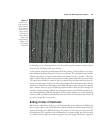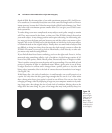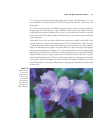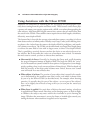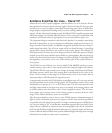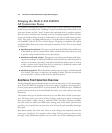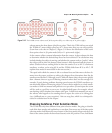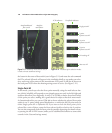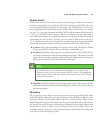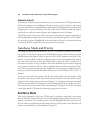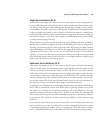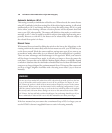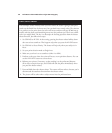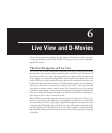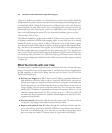
Dynamic-Area AF
In this mode, you still select the focus point yourself using the multi selector button,
and when using Single-servo autofocus (AF-S, discussed later), the D7000 will evalu-
ate focus solely based on that point. In that respect, the D7000 behaves exactly as it
does in Single-point AF mode. However, if you have chosen Continuous-servo autofo-
cus (AF-C) or are using Automatic autofocus (AF-A) and the camera shifts from AF-S
to AF-C, the D7000’s “smarts” spring to life if your subject leaves the selected focus
zone. When that happens, the camera re-evaluates focus based on the other focus points
surrounding the one you chose. To recap, you can set the D7000 so that it will use 9,
21, or 39 points. You can view what pattern is currently being used by pressing the Info
button and viewing the autofocus array representation in the screen that pops up.
■ 9 points. Only eight surrounding focus points will be used, allowing the D7000
to respond quickly to subjects that are moving in a predictable way.
■ 21 points. Should the subject leave the selected focus point, the D7000 will refo-
cus based on information from 20 surrounding focus points. This mode is best for
subjects that are moving erratically. Autofocus may take slightly longer because more
points are considered. I prefer this mode most of the time.
Chapter 5 ■ Mastering Autofocus Options 147
Note
The active focus points surrounding the red highlighted focus zone will shift
around the array as you move the manually chosen focus point. The highlighting
applies to the 9-point and 21-point options only when the center point is selected
as the active focus point.
■ 39 points. Should the subject leave your selected focus point, the camera will refo-
cus based on information from all surrounding focus points, which may be best for
fast moving subjects.
3D-tracking
All 39 points are used, and you can select the focus point as described for the other
modes. Should the subject leave your selected focus zone, the D7000 uses distance infor-
mation to calculate the path of the subject and select a new focus point. Nikon recom-
mends using this setting to focus subjects that move erratically from side to side, because
the camera can use the distance information to differentiate the original subject from
objects that are closer or farther away. Tracking will abort if your subject leaves the
viewfinder entirely; in that case, release the shutter button and reframe your image with
your subject in the selected focus point.



